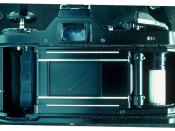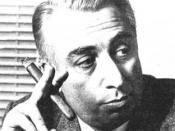Since the beginning of film history, film-makers and film-theoreticians have tried to compare "film" with verbal language in a serious attempt to justify the film medium. The debate over a special "film language" is in itself problematic. The main difficulty lies in the use of the term "language" to describe words and images. It is very surprising that the concept of "film language" has been around since the time of the earliest films. Even though cinematography occupies a position between moving images and storytelling, it seems to have grown into a technical, visual competitor to spoken language. From there something resembling an international language theory has developed.
In the early stages of cinematography, the montage was seen as the language of the film director. Wdelovod Pudowkin recognized that the union of the film sequences has a strong influence on the cinematographic statement of the regisseur. He was the first person to consider comparing film and language to each other and the first to equate film images with words.
Sergej Eisenstein also concerned himself with this comparison. He went further, from comparing words and images, to comparing images with hieroglyphics and ideograms, using the images as a sort of optical words.. Eisenstein viewed sequenced images as the vocabulary of the "written" language of film. At this level, Eisenstein believed it was the responsibility of film theoreticians to establish the semantic form and the meanings of idiomatic images.
The counter-movement to the "montage", the so-called "Mise-en-Scene", comes from France, and its pioneer Andr? Bazin responded to those who sought a deeper understanding of the developing problems of the film craft. For him, film language is intrinsic within the film's arrangement and form, and he views the creation and assembly of individual images as more important than the montage, the art of putting...



I like it!!
I feel as if this essay had a wonderful introduction. It caught my attention from the very start. I also liked how the author kept asking questions throughout the essay. That was a way of getting the audience to participate in the essay.
0 out of 0 people found this comment useful.